Microwave-Assisted Synthesis and Properties of Novel Hexaazatrinaphthylene Dendritic Scaffolds
Abstract
:1. Introduction
2. Results and Discussion
3. Experimental Section
4. Conclusions
Supplementary Materials
Author Contributions
Funding
Acknowledgments
Conflicts of Interest
References and Note
- Lo, S.C.; Burn, P.L. Development of Dendrimers: Macromolecules for Use in Organic Light-Emitting Diodes and Solar Cells. Chem. Rev. 2007, 107, 1097–1116. [Google Scholar] [PubMed]
- Gillies, E.R.; Jonsson, T.B.; Fréchet, J.M.J. Stimuli-Responsive Supramolecular Assemblies of Linear-Dendritic Copolymers. J. Am. Chem. Soc. 2004, 126, 11936–11942. [Google Scholar] [CrossRef] [PubMed]
- Kwak, G.; Choi, J.U.; Seo, K.H.; Park, L.S.; Hyun, S.H.; Kim, W.S. Three-Dimensional PtRu Nanostructures. Chem. Mater. 2007, 19, 2898–2904. [Google Scholar]
- Kay, K.Y.; Han, K.J.; Yu, Y.J.; Park, Y.D. Dendritic fullerenes (C60) with photoresponsive azobenzene groups. Tetrahedron Han, Lett. 2002, 43, 5053–5057. [Google Scholar]
- Liao, L.X.; Junge, D.M.; McGrath, D.V. Functional Polymers from Novel Carboxyl-Terminated Trithiocarbonates as Highly Efficient RAFT Agents. Macromolecules 2002, 35, 319–329. [Google Scholar]
- Crispin, X.; Cornil, J.; Friedlein, R.; Okudaira, K.K.; Lemaur, V.; Crispin, A.; Kestemont, G.; Lehmann, M.; Fahlman, M.; Lazzaroni, R.; et al. Electronic Delocalization in Discotic Liquid Crystals: A Joint Experimental and Theoretical Study. J. Am. Chem. Soc. 2004, 126, 11889–11893. [Google Scholar] [CrossRef] [PubMed]
- Goodby, J.W.; Saez, I.M.; Cowling, S.J.; Görtz, V.; Draper, M.; Hall, A.W.; Sia, S.; Cosquer, G.; Lee, S.E.; Raynes, E.P. Transmission and amplification of information and properties in nanostructured liquid crystals. Angew. Chem. Int. Ed. 2008, 47, 2754–2787. [Google Scholar] [CrossRef]
- Ishi-I, T.; Yaguna, K.; Kuwahara, R.; Taguri, Y.; Mataka, S. Self-Assembling of n-Type Semiconductor Tri(phenanthrolino)hexaazatriphenylenes with a Large Aromatic Core. Org. Lett. 2006, 8, 585–588. [Google Scholar]
- Marshall, S.R.; Rheingold, A.L.; Dawe, L.N.; Shum, W.W.; Kitamura, C.; Miller, J.S. Corner Sharing Tetrahedral Network in Co3(HAT)[N(CN)2]6(OH2)2 (HAT = 1,4,5,8,9,12-Hexaazatriphenylene). Inorg. Chem. 2002, 41, 3599–3601. [Google Scholar]
- Hirayama, T.; Yamasaki, S.; Ameku, H.; Ishi-i, T.; Thiemann, T.; Mataka, S. Fluorescent solvatochromism of bi-polar N, N-diphenylaminoaryl-substituted hexaazatriphenylenes, tetraazaphenanthrene, and quinoxalines. Dyes Pigmemts 2005, 67, 105–110. [Google Scholar] [CrossRef]
- García-Velázquez, D.; González-Orive, A.; Hernández-Creus, A.; Luque, R.; Ravelo, A.G. Novel organogelators based on amine-derived hexaazatrinaphthylene. Org. Biomol. Chem. 2011, 9, 6524–6527. [Google Scholar] [CrossRef]
- Alonso, S.J.; Estévez-Braun, A.; Ravelo, A.G.; Zárate, R.; López, M. Double domino Knoevenagel hetero Diels–Alder strategy towards bis-pyrano-1, 4-benzoquinones. Tetrahedron 2007, 63, 3066–3074. [Google Scholar] [CrossRef]
- Kaafarani, B.R.; Kondo, T.; Yu, J.; Zhang, Q.; Dattilo, D.; Risko, C.; Jones, S.C.; Barlow, S.; Domercq, B.; Amy, F.; et al. High charge-carrier mobility in an amorphous hexaazatrinaphthylene derivative. J. Am. Chem. Soc. 2005, 127, 16358–16359. [Google Scholar] [CrossRef]
- Albouy, P.A.; Guillon, D.; Heinrich, B.; Levelut, A.-M.; Malthête, J. Structural study of the nematic and hexagonal columnar phases of wire shaped self assemblies of thermotropic mesogens. J. Phys. II 1995, 5, 1617–1634. [Google Scholar] [CrossRef]
- Kestemont, G.; De Halleux, V.; Lehmann, M.; Ivanov, D.A.; Watson, M.; Geerts, Y.H. Discotic mesogens with potential electron carrier properties. Chem. Commun. 2001, 20, 2074–2076. [Google Scholar] [CrossRef] [PubMed]
- Brunsfeld, L.; Schenning, A.P.H.J.; Broeren, M.A.C.; Janssen, H.M.; Vekemans, J.A.J.M.; Meijer, E.W. Chiral Amplification in Columns of Self-Assembled N,N′,N″-Tris((S)-3,7-dimethyloctyl)benzene-1,3,5-tricarboxamide in Dilute Solution. Chem. Lett. 2000, 29, 292–293. [Google Scholar] [CrossRef]
- Hanabusa, K.; Kawakami, A.; Kimura, M.; Shirai, H. Remarkable viscoelasticity of organic solvents containing trialkyl-1, 3, 5-benzenetricarboxamides and their intermolecular hydrogen bonding. Chem. Lett. 1997, 26, 429–430. [Google Scholar] [CrossRef]
- Roussel, O.; Kestemont, G.; Tant, J.; De Halleux, V.; Gomez Aspe, R.; Levin, J.; Remacle, A.; Ivanov, D.; Gearba, R.I.; Lehmann, M.; et al. Discotic liquid crystals as electron carrier materials. Mol. Cryst. Liq. Cryst. 2003, 396, 35–39. [Google Scholar] [CrossRef]
- Hierlemann, A.; Campbell, J.K.; Baker, L.A.; Crooks, R.M.; Ricco, A.J. Structural distortion of dendrimers on gold surfaces: A tapping-mode AFM investigation. J. Am. Chem. Soc. 1998, 120, 5323–5324. [Google Scholar] [CrossRef]
- Palma, M.; Levin, J.; Debever, O.; Geerts, Y.; Lehmann, M.; Samorí, P. Self-assembly of hydrogen-bond assisted supramolecular azatriphenylene architectures. Soft Matter 2008, 4, 303–310. [Google Scholar] [CrossRef]
- Scmaltz, B.; Weil, T.; Müllen, K. Polyphenylene-Based Materials: Control of the Electronic Function by Molecular and Supramolecular Complexity. Adv. Mater. 2009, 21, 1067–1078. [Google Scholar] [CrossRef]
- Palermo, V.; Palma, M.; Samorí, P. Electronic characterization of organic thin films by Kelvin probe force microscopy. Adv. Mater. 2006, 18, 145–164. [Google Scholar] [CrossRef]
- Wu, J.; Watson, M.D.; Zhang, L.; Wang, Z.; Müllen, K. Hexakis(4-iodophenyl)-peri-hexabenzocoronene- A Versatile Building Block for Highly Ordered Discotic Liquid Crystalline Materials. J. Am. Chem. Soc. 2004, 126, 177–186. [Google Scholar] [CrossRef] [PubMed]



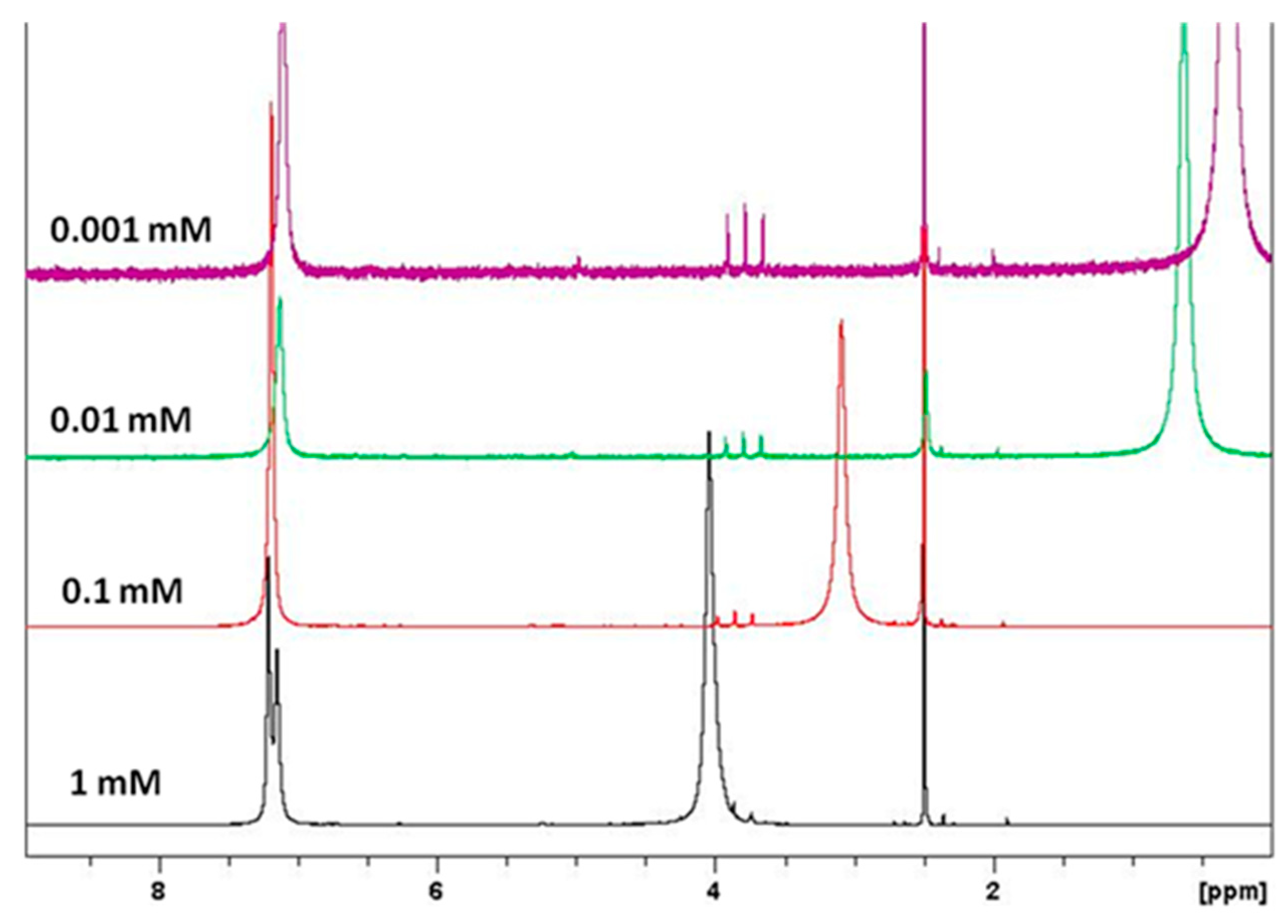
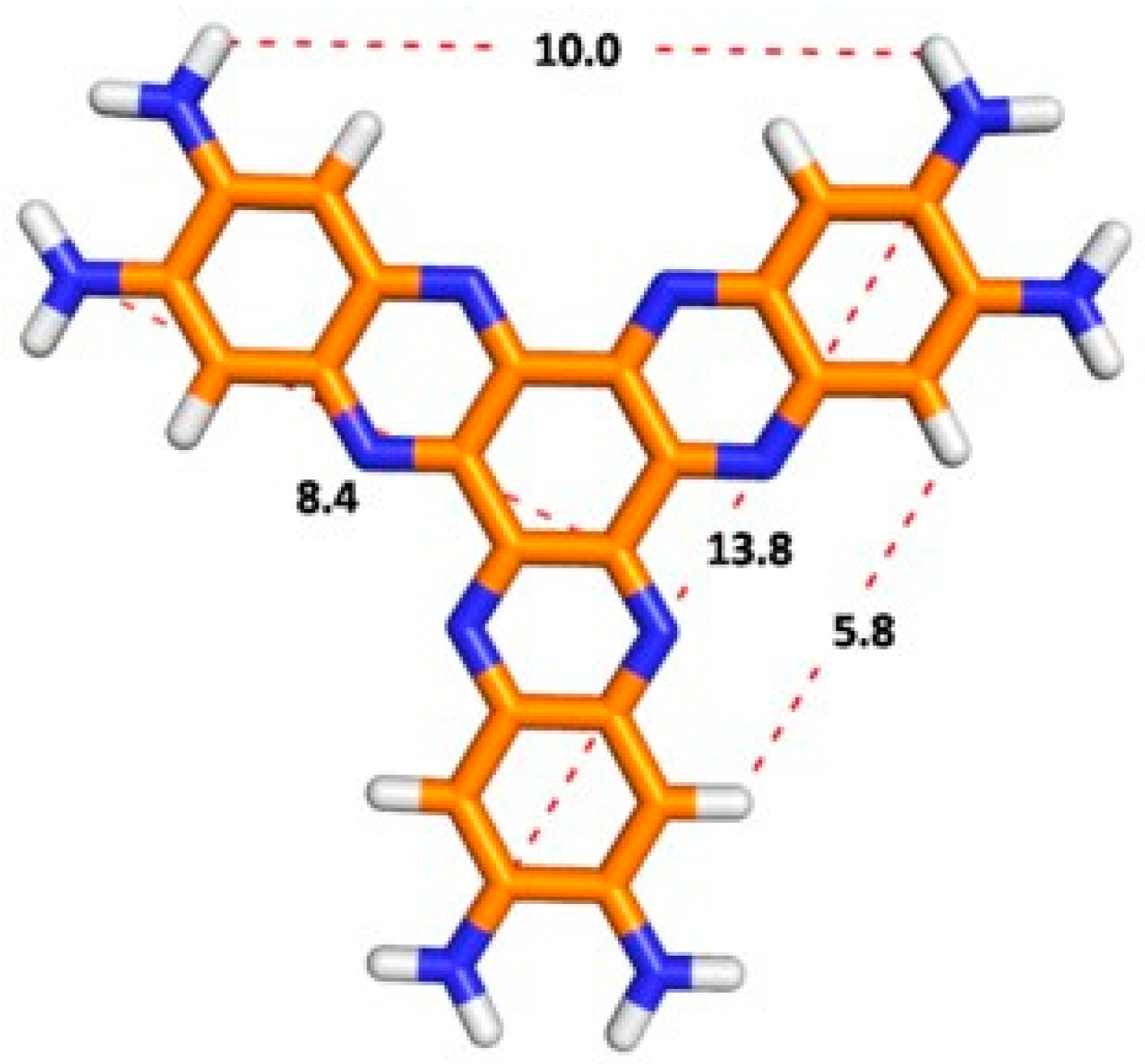
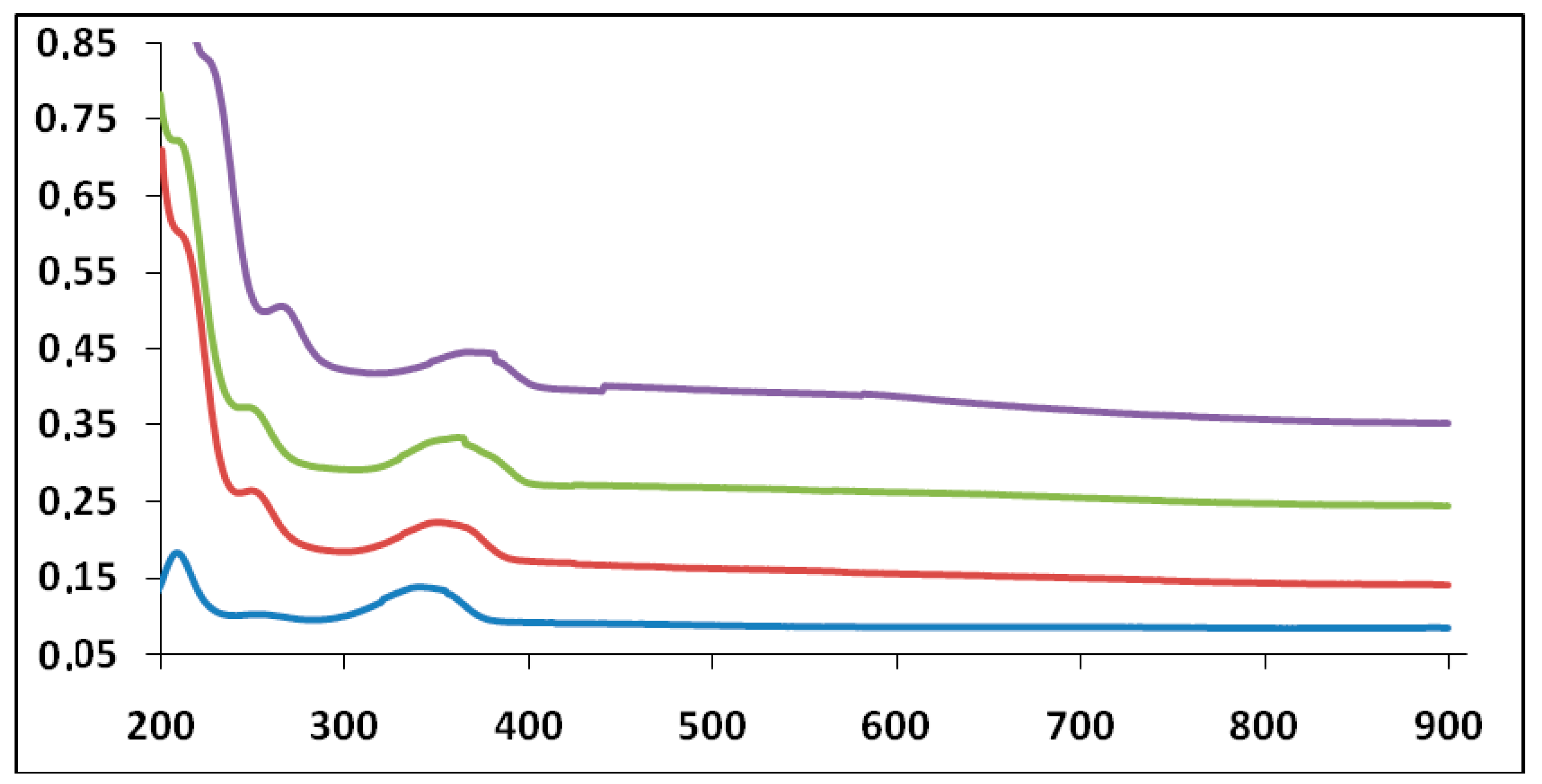

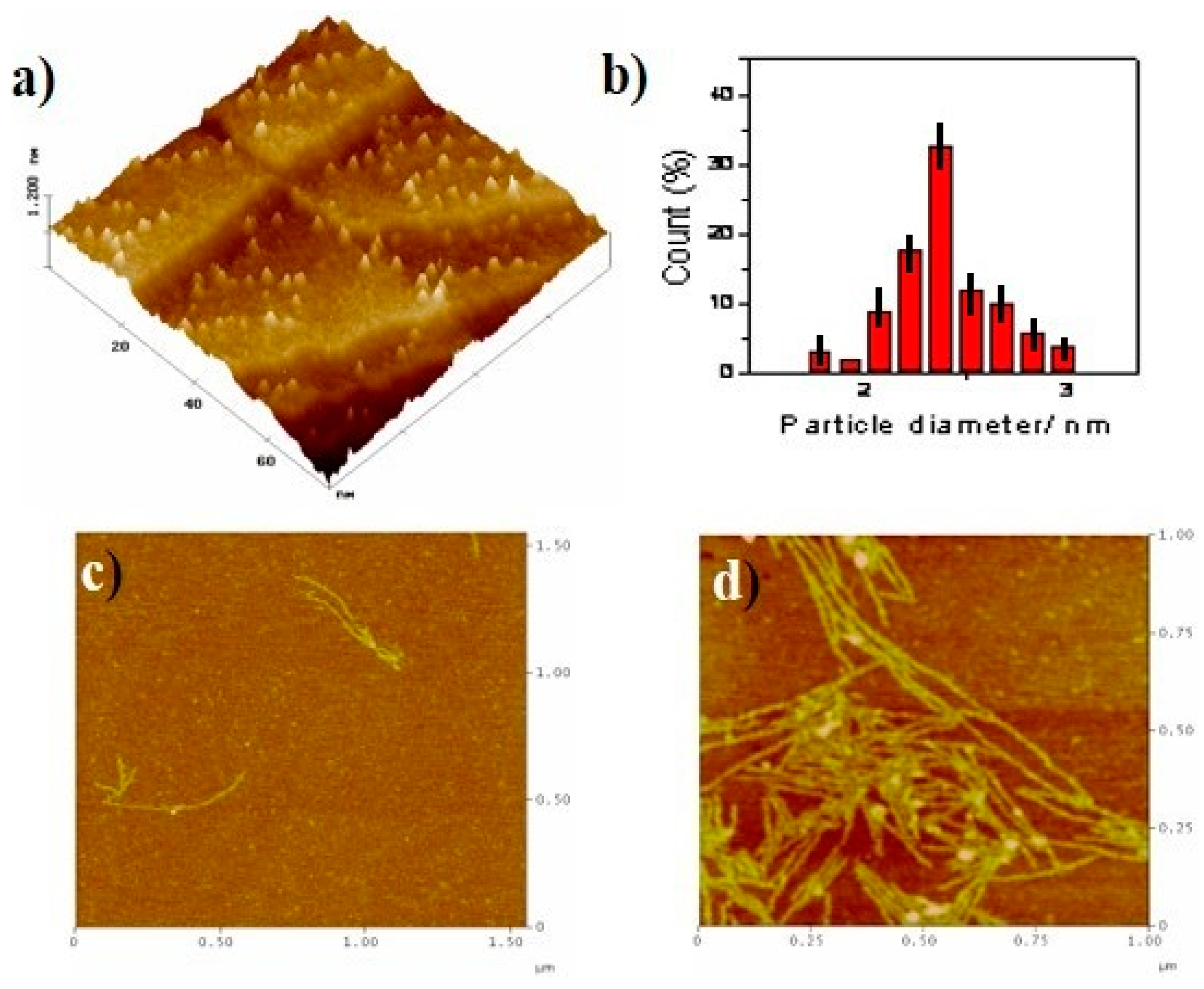
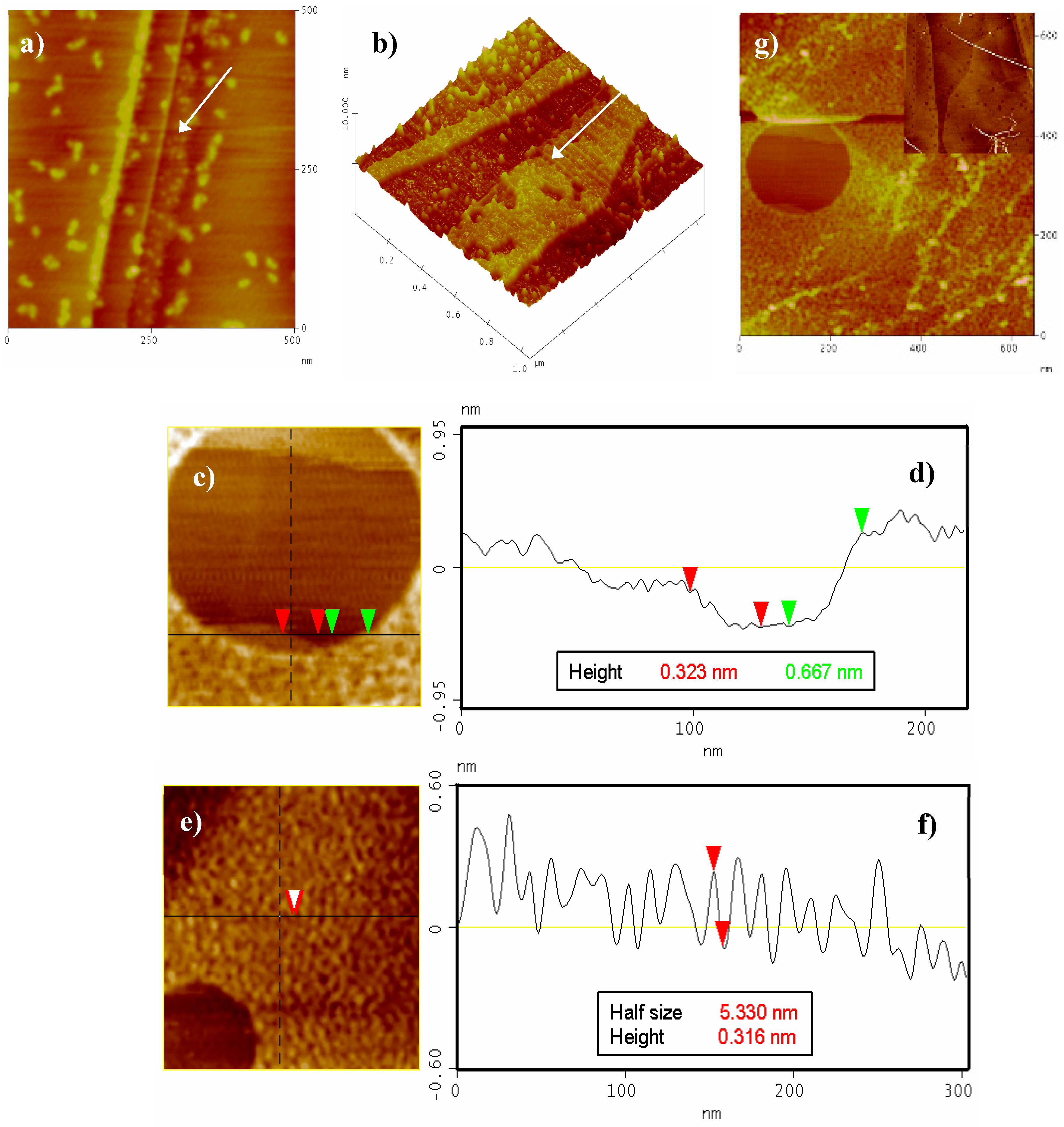
| Days | ||||
| Max. Peak 1 | 1 | 3 | 5 | 7 |
| Absorbance | 0.1831 | 0.2611 | 0.3744 | 0.6018 |
| λ (nm) | 209 | 244 | 248 | 260 |
| ε (M−1 cm−1) | 18,310 | 26,110 | 37,440 | 50,180 |
| Days | ||||
| Max. Peak 2 | 1 | 3 | 5 | 7 |
| Absorbance | 0.1373 | 0.2225 | 0.3326 | 0.4463 |
| λ (nm) | 338 | 349 | 355 | 367 |
| ε (M−1 cm−1) | 13,730 | 22,250 | 33,260 | 44,630 |
| Compound | Tg a [°C] | Tc1 a [°C] | Tc2 a [°C] | Tm a [°C] |
|---|---|---|---|---|
| G1 | 163 | 192 (69) | 238 (44) | 300 |
| G2 | 142 | 165 (90) | 220 (26) | 275 |
| G3 | 160 | 196 (72) | --- | 254 |
Sample Availability: Samples of the compounds are not available from the author. |
Publisher’s Note: MDPI stays neutral with regard to jurisdictional claims in published maps and institutional affiliations. |
© 2020 by the authors. Licensee MDPI, Basel, Switzerland. This article is an open access article distributed under the terms and conditions of the Creative Commons Attribution (CC BY) license (http://creativecommons.org/licenses/by/4.0/).
Share and Cite
García Velázquez, D.; Luque, R.; Ravelo, Á.G. Microwave-Assisted Synthesis and Properties of Novel Hexaazatrinaphthylene Dendritic Scaffolds. Molecules 2020, 25, 5038. https://doi.org/10.3390/molecules25215038
García Velázquez D, Luque R, Ravelo ÁG. Microwave-Assisted Synthesis and Properties of Novel Hexaazatrinaphthylene Dendritic Scaffolds. Molecules. 2020; 25(21):5038. https://doi.org/10.3390/molecules25215038
Chicago/Turabian StyleGarcía Velázquez, Daniel, Rafael Luque, and Ángel Gutiérrez Ravelo. 2020. "Microwave-Assisted Synthesis and Properties of Novel Hexaazatrinaphthylene Dendritic Scaffolds" Molecules 25, no. 21: 5038. https://doi.org/10.3390/molecules25215038






